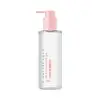What's inside
What's inside
 Key Ingredients
Key Ingredients

 Benefits
Benefits

 Concerns
Concerns

No concerns
 Ingredients Side-by-side
Ingredients Side-by-side

Cetyl Ethylhexanoate
EmollientSorbeth-30 Tetraoleate
EmulsifyingCaprylic/Capric Triglyceride
MaskingHelianthus Annuus Seed Oil
EmollientOryza Sativa Bran Oil
EmollientLactobacillus/Soymilk Ferment Filtrate
Skin ConditioningCapryloyl Salicylic Acid
ExfoliatingSaccharomyces/Rice Ferment Filtrate
Skin ConditioningSaponaria Officinalis Leaf Extract
AntimicrobialTocopherol
AntioxidantButylene Glycol
HumectantPentylene Glycol
Skin ConditioningWater
Skin ConditioningCaprylyl Glycol
Emollient1,2-Hexanediol
Skin ConditioningCetyl Ethylhexanoate, Sorbeth-30 Tetraoleate, Caprylic/Capric Triglyceride, Helianthus Annuus Seed Oil, Oryza Sativa Bran Oil, Lactobacillus/Soymilk Ferment Filtrate, Capryloyl Salicylic Acid, Saccharomyces/Rice Ferment Filtrate, Saponaria Officinalis Leaf Extract, Tocopherol, Butylene Glycol, Pentylene Glycol, Water, Caprylyl Glycol, 1,2-Hexanediol
Caprylic/Capric Triglyceride
MaskingPEG-40 Sorbitan Peroleate
EmulsifyingPrunus Armeniaca Kernel Oil
MaskingTocopherol
AntioxidantTocopheryl Acetate
AntioxidantAscorbyl Palmitate
AntioxidantCitrus Aurantium Dulcis Peel Oil
MaskingHelianthus Annuus Seed Oil
EmollientDicaprylyl Carbonate
EmollientBorago Officinalis Seed Oil
EmollientCitrus Paradisi Peel Oil
MaskingCitrus Nobilis Peel Oil
MaskingRosmarinus Officinalis Leaf Extract
AntimicrobialAleurites Moluccanus Seed Oil
Skin ConditioningCymbopogon Citratus Leaf Oil
MaskingLavandula Hybrida Oil
EmollientOryza Sativa Bran Oil
EmollientLavandula Angustifolia Oil
MaskingC12-15 Alkyl Benzoate
AntimicrobialCetyl Ethylhexanoate
EmollientCitral
PerfumingLimonene
PerfumingLinalool
PerfumingCaprylic/Capric Triglyceride, PEG-40 Sorbitan Peroleate, Prunus Armeniaca Kernel Oil, Tocopherol, Tocopheryl Acetate, Ascorbyl Palmitate, Citrus Aurantium Dulcis Peel Oil, Helianthus Annuus Seed Oil, Dicaprylyl Carbonate, Borago Officinalis Seed Oil, Citrus Paradisi Peel Oil, Citrus Nobilis Peel Oil, Rosmarinus Officinalis Leaf Extract, Aleurites Moluccanus Seed Oil, Cymbopogon Citratus Leaf Oil, Lavandula Hybrida Oil, Oryza Sativa Bran Oil, Lavandula Angustifolia Oil, C12-15 Alkyl Benzoate, Cetyl Ethylhexanoate, Citral, Limonene, Linalool
 Reviews
Reviews

Ingredients Explained
These ingredients are found in both products.
Ingredients higher up in an ingredient list are typically present in a larger amount.
This ingredient is an emollient, solvent, and texture enhancer. It is considered a skin-softener by helping the skin prevent moisture loss.
It helps thicken a product's formula and makes it easier to spread by dissolving clumping compounds.
Caprylic Triglyceride is made by combining glycerin with coconut oil, forming a clear liquid.
While there is an assumption Caprylic Triglyceride can clog pores due to it being derived from coconut oil, there is no research supporting this.
Learn more about Caprylic/Capric TriglycerideCetyl Ethylhexanoate is an emollient ester. It comes from cetearyl alcohol and 2-ethylhexanoic acid.
Cetyl Ethylhexanoate is an emollient that adds a velvety feel to skin without being greasy or oily. Emollients help trap moisture into your skin, keeping your skin soft and hydrated.
Helianthus Annuus Seed Oil is the oil derived from the seeds of a Sunflower. Sunflower seed oil is non-fragrant. It is an emollient, meaning it helps to soften the skin.
Sunflower seed oil contains many fatty acids. The fatty acids found in sunflower seeds include (from highest amount to least): linoleic acid, myristic acid, palmitic acid, stearic acid, arachidic acid, oleic acid, and linolenic acid.
These fatty acids help the skin create ceramides. Ceramides play a role in repairing the skin barrier.
Helianthus Annuus Seed Oil helps moisturize the skin. This in turn helps the skin look more rejuvenated and smoother.
Sunflowers are rich in vitamin E.
Historians believe Indigenous cultures of North America domesticated sunflowers before corn. Thus they relied on sunflower oil for a variety of uses. One such use is moisturizing skin and hair.
Sunflower seed oil may not be fungal acne safe. We recommend speaking with a professional if you have any concerns.
Learn more about Helianthus Annuus Seed OilOryza Sativa Bran Oil comes from the outer layer of a rice kernel. It is a byproduct of milling rice, or the operation to produce a whole grain rice product.
This ingredient has emollient and skin conditioning properties. This is due to its polysaccharides and omega-3 fatty acids.
Emollients help soothe and soften the skin. It does this by creating a protective film on your skin. This barrier helps trap moisture and keeps your skin hydrated.
Learn more about Oryza Sativa Bran OilTocopherol (also known as Vitamin E) is a common antioxidant used to help protect the skin from free-radicals and strengthen the skin barrier. It's also fat soluble - this means our skin is great at absorbing it.
Vitamin E also helps keep your natural skin lipids healthy. Your lipid skin barrier naturally consists of lipids, ceramides, and fatty acids. Vitamin E offers extra protection for your skin’s lipid barrier, keeping your skin healthy and nourished.
Another benefit is a bit of UV protection. Vitamin E helps reduce the damage caused by UVB rays. (It should not replace your sunscreen). Combining it with Vitamin C can decrease sunburned cells and hyperpigmentation after UV exposure.
You might have noticed Vitamin E + C often paired together. This is because it is great at stabilizing Vitamin C. Using the two together helps increase the effectiveness of both ingredients.
There are often claims that Vitamin E can reduce/prevent scarring, but these claims haven't been confirmed by scientific research.
Learn more about Tocopherol